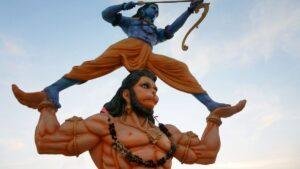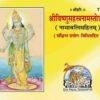Buddha Purnima, also known as Buddha Jayanti or Vesak, is one of the most significant festivals for Buddhists around the world. It is a day when they commemorate the birth, enlightenment, and passing of Gautama Buddha, the founder of Buddhism. Buddha Purnima falls on the full moon day of the Vaishakha month, which is on 5 May this year. This day holds great spiritual significance for Buddhists as it marks the birth and enlightenment of the Buddha, who dedicated his life to teaching the path to liberation from suffering. In this article, we will delve deeper into the history, and significance of Buddha Purnima, exploring the different ways in which this special day is observed in different parts of the world.
The Significance of Buddha Jayanti

The life of the Buddha, also known as Siddharth Gautam, was one of great spiritual awakening and enlightenment. Born into a royal family, he realized at a young age that material wealth and worldly pleasures could not bring lasting happiness. Seeking answers to life’s deepest questions, he renounced his privileged life and embarked on a spiritual journey of self-discovery.
Through years of asceticism and meditation, the Buddha attained enlightenment under the Bodhi Tree, uncovering the Four Noble Truths and the Eightfold Path. His teachings emphasized the importance of cultivating mindfulness, compassion, and wisdom, as well as the impermanence and interdependence of all things.
The Buddha’s teachings have had a profound impact on the world, not only in the growth and spread of Buddhism but also in the way they have influenced countless individuals and cultures. The principles of non-attachment, selflessness, and empathy have resonated with people of diverse backgrounds and religions, inspiring them to lead more meaningful and compassionate lives.
Buddha Purnima, also known as Vesak or Buddha Jayanti, is a day to commemorate the birth, enlightenment, and passing of the Buddha. It is a time for reflection and introspection, a moment to contemplate the Buddha’s teachings and their relevance to our own lives. By practising meditation and cultivating inner stillness, we can connect with the Buddha’s spirit of wisdom and compassion, and draw inspiration from his example.
We honour the Buddha’s legacy by seeking to embody his teachings and by spreading love and kindness to all beings. Through the simple act of lighting a candle or offering flowers, we can express our gratitude for the Buddha’s wisdom and for the countless benefits we have received through his teachings.
The Legend of The Buddha’s Birth Under A Sal Tree
According to legend, the Buddha’s birth was a miraculous event, foretold by the appearance of auspicious signs and prophecies. His mother, Queen Maya, was said to have given birth to him while standing under a sal tree in the Lumbini Grove.
The sal Tree, revered for its strength and beauty, symbolized the Buddha’s potential for spiritual growth and enlightenment. It is said that upon his birth, the young prince took seven steps, with lotus flowers blooming under his feet with each step.
This miraculous birth under the sal tree is seen as a symbol of the Buddha’s divine nature and his connection to the natural world. It also underscores the central importance of birth and rebirth in Buddhist philosophy, reminding us that each moment presents a new opportunity for growth and transformation.
As we reflect on this sacred legend, we are invited to consider the miraculous potential within each of us, and to recognize the interconnectedness of all beings in the web of life. Just as the Buddha’s birth beneath the sal tree marked the beginning of a profound spiritual journey, so too can we embark on our own paths of awakening, cultivating compassion and wisdom in service of all beings.
The Story of the Buddha Encounter with the Elephant Nalagiri
The story of the Buddha’s encounter with the elephant Nalagiri is a powerful tale of compassion and spiritual transformation.
Nalagiri was a fierce elephant that had been trained by a cruel and abusive handler to attack anyone who came near him. One day, the elephant was sent on a rampage through the streets, causing chaos and destruction. The Buddha, hearing of the elephant’s plight, decided to confront him and offer him a way out of his suffering.
As the Buddha approached, Nalagiri charged towards him with fury, his eyes blazing with anger. But instead of running away or defending himself, the Buddha stood his ground and radiated a calm and loving presence. As the elephant drew closer, he suddenly stopped in his tracks and fell to his knees, overcome by the Buddha’s peaceful aura.
The Buddha then approached the elephant and placed his hand on Nalagiri’s head, soothing his troubled mind and calming his fears. The once-fierce elephant was transformed by the Buddha’s compassion and gentleness, becoming a symbol of the power of love and kindness to transform even the most hardened hearts.
This story reminds us that true spiritual transformation comes not through force or violence, but through the power of love and compassion. By embodying the Buddha’s teachings of nonviolence and non-harm, we too can transform the world around us and bring healing to even the most broken and wounded souls.
The Muhurat of Buddha Purnima

The Muhurat of Buddha Purnima is a special time for all those who follow the teachings of Gautama Buddha. It is a time to celebrate his life and teachings, and to reflect on his legacy of compassion, wisdom, and enlightenment.
It marks the 2586th birth anniversary of Gautama Buddha, and is celebrated during the Vaishakha month of the Hindu calendar.
2586th Birth Anniversary of Gautama Buddha
Buddha Purnima on Thursday, May 23, 2024
Purnima Tithi Begins – May 22 | 9:17 AM in (United States)
Purnima Tithi Ends – May 23 | 9:52 AM in (United States)
It is believed that Bodh Gaya is where he attained enlightenment, and where he taught the Dharma for the first time. Other important pilgrimage sites include Lumbini, Nepal (his birthplace), Sarnath, and Kushinagar, where he passed away.
Buddhists honor the Buddha’s teachings by practicing mindfulness, compassion, and generosity. They also reflect on the Buddha’s message of non-violence, wisdom, and love, and seek to apply these principles to their own lives.
*It is important to note that all muhurat mentioned above, are based on UAE timing*
Puja Vidhi for Buddha Purnima
Buddha Purnima, also known as Buddha Jayanti or Vesak, is a special day for Buddhists all over the world. On this day, they commemorate the birth, enlightenment, and passing of Gautama Buddha by performing various rituals and offering prayers.
The puja vidhi for Buddha Purnima may vary depending on the traditions and customs of different Buddhist communities. However, here are some common practices that are followed on this auspicious day:
Visiting Temples: People often visit temples on this day to offer prayers and offerings. They may light candles, burn incense, and offer flowers, fruits, or other symbolic items to Buddha statues or images.
Meditation: Meditation is an essential part of Buddhist practice, and it holds particular significance on Buddha Purnima. Many Buddhists observe this day by meditating on the Buddha’s teachings and reflecting on his life and legacy.
Listening to Dharma Talks: Buddhist teachers and scholars may give talks or lectures on the Buddha’s teachings on this day. These talks may cover topics such as the Four Noble Truths, the Eightfold Path, and other key aspects of Buddhist philosophy.
Performing Acts of Generosity: Compassion and generosity are important values in Buddhism, and Buddhists often use Buddha Purnima as an opportunity to perform acts of kindness and charity. They may donate money or food to the needy, or participate in other charitable activities.
Celebrating with Parades and Processions: In some parts of the world, such as Thailand, Buddha Purnima is celebrated with colorful parades and processions. These may feature Buddha statues, decorated floats, and dancers dressed in traditional costumes.
Bathing of Buddha Statues: In Nepal, it is a tradition to bathe Buddha statues on Buddha Purnima. Devotees pour water over the statues to symbolize purification and renewal.
On this day, Buddhists around the world come together to honor the Buddha’s teachings and to seek inspiration on their own spiritual paths. May the puja vidhi and practices of Buddha Purnima bring peace, joy, and enlightenment to all who observe it.
Conclusion
In conclusion, Buddha Purnima is a festival that holds immense spiritual significance for Buddhists around the world. It is a day to celebrate the birth, enlightenment, and passing of Gautama Buddha, whose teachings have had a profound impact on the world. The life and teachings of the Buddha continue to inspire people to this day, encouraging them to seek inner peace and liberation from suffering. The celebrations of Buddha Purnima vary from region to region, but they all share a common thread of gratitude and reverence for the Buddha’s teachings. Whether it is with meditation, offerings, or acts of kindness, Buddhists come together on this special day to honor the Buddha’s legacy and reflect on the teachings that continue to guide them towards a more meaningful and fulfilling life.



















Add comment